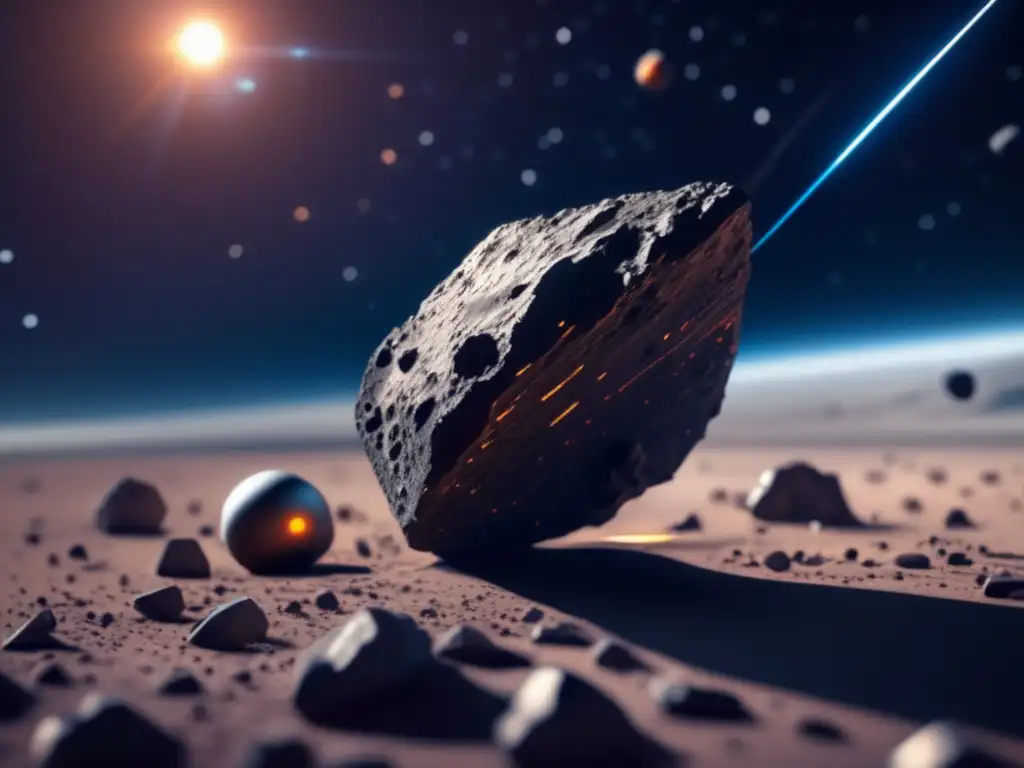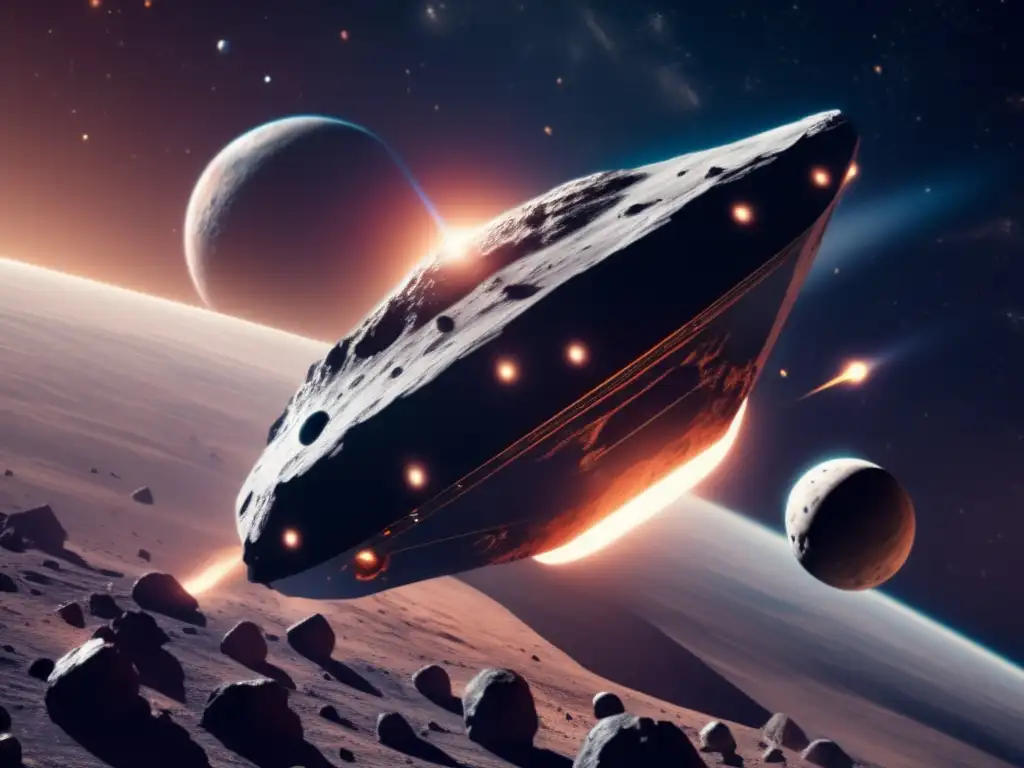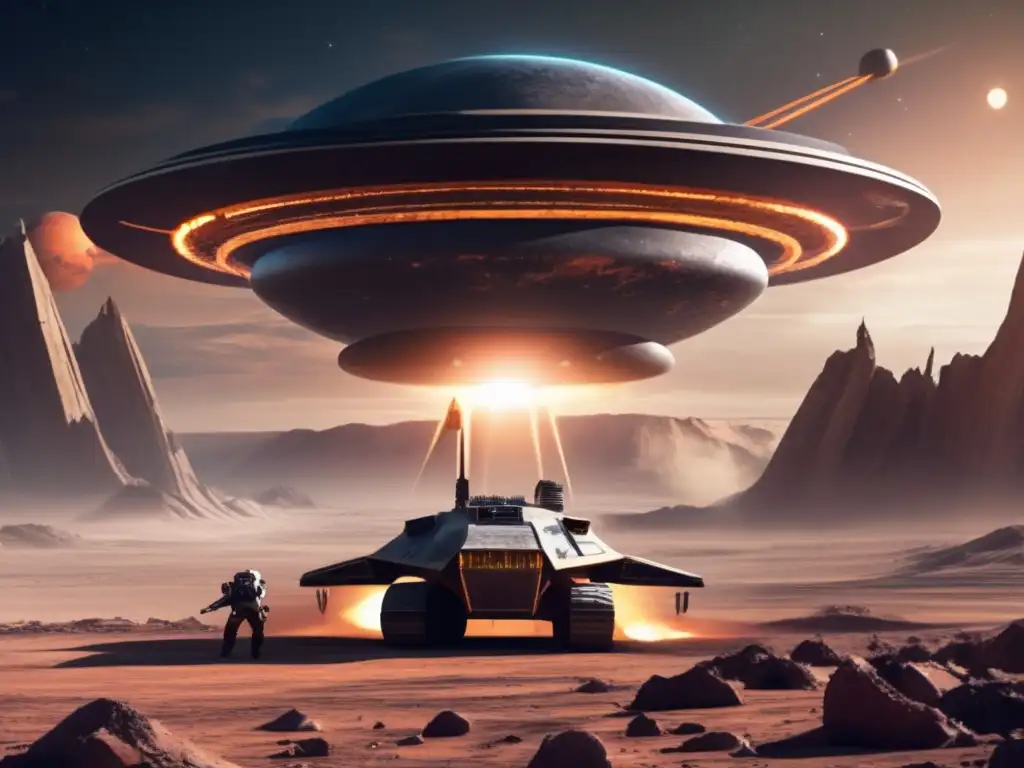The Space Sentry: Tools For Asteroid Detection And Deflection

Introduction
Asteroids have been a matter of great concern for space scientists, as they can cause severe damage if they impact the Earth. In the past, we have seen some catastrophic events caused by these celestial objects, such as the Tunguska event and the Chelyabinsk meteor. Therefore, it is essential to keep track of these asteroids and take steps to prevent their impact. The tools used for the detection and deflection of asteroids are known as the Space Sentry. In this article, we will discuss the various tools used by the space sentry to detect and deflect asteroids.
The Sentinel System

Overview
The Sentinel System uses advanced technologies to detect and track near-Earth asteroids (NEAs). The system is capable of detecting asteroids up to 140 meters in diameter, which could potentially cause significant damage if they collide with the Earth. The Sentinel System uses infrared sensors that can detect the heat signature of asteroids, making it easier to spot them against the background of space.
How does it work?
The Sentinel System uses two spacecraft. The first spacecraft is placed in a solar orbit that is slightly ahead of the Earth's orbit around the sun. This spacecraft is equipped with infrared sensors that can detect the heat signatures of NEAs. The second spacecraft is placed in a Venus-like orbit, behind the Earth. This spacecraft is equipped with a telescope that can provide more detailed images and measurements of the NEAs detected by the first spacecraft.
What happens after an asteroid is detected?
Once an asteroid is detected, the information is relayed to the ground station, where scientists analyze the data to determine its trajectory and potential impact. If the asteroid is found to be on a collision course with Earth, the Sentinel System can provide accurate information about its size, shape, and composition, which is crucial in determining the best way to deflect it.
The Gravity Tractor

Overview
The Gravity Tractor is a spacecraft that uses the gravitational pull of its own mass to alter the orbit of an asteroid. The spacecraft slowly orbits the asteroid and uses its gravitational force to gently pull the asteroid off its collision course with Earth.
How does it work?
The Gravity Tractor works by positioning itself near the asteroid and using its engines to maintain a safe distance. Over time, the gravitational pull of the spacecraft can alter the asteroid's course, preventing it from colliding with Earth. The Gravity Tractor can also be used to study the composition and structure of the asteroid in detail, providing valuable data for future missions.
Limitations
The Gravity Tractor has some limitations. Firstly, it is only effective for small asteroids up to 400 meters in diameter. Secondly, it requires a lot of time to be effective. For an asteroid to be successfully deflected, the Gravity Tractor needs to be near the asteroid for several years. Therefore, it is not suitable for dealing with imminent threats.
The Kinetic Impactor

Overview
The Kinetic Impactor is a spacecraft that collides with an asteroid at high speeds, altering its orbit and preventing it from colliding with Earth. The impactor is designed to destroy or break apart the asteroid, making it easier to deflect.
How does it work?
The Kinetic Impactor works by accelerating to high speeds and colliding with the asteroid with great force. The impact causes the asteroid to change direction and avoids a collision with Earth. The Kinetic Impactor can also be used to break apart or destroy the asteroid, making it easier to deflect.
Limitations
The Kinetic Impactor has some limitations. Firstly, it can only deflect asteroids up to 200 meters in diameter. Secondly, it requires a lot of energy to be effective. Thirdly, there is a risk that the impactor could break the asteroid into smaller fragments that still pose a threat to Earth. Finally, there is a risk that the impactor could miss the asteroid altogether.
Frequently Asked Questions

-
How likely is an asteroid impact?
The likelihood of an asteroid impact is relatively low. However, the consequences of such an impact are severe enough to warrant serious attention.
-
Can we completely eliminate the threat of asteroid impacts?
No, we cannot completely eliminate the threat of asteroid impacts. However, we can take steps to reduce the risk and minimize the damage caused by such an impact.
-
Are there any other methods for deflecting asteroids?
Yes, there are other methods for deflecting asteroids, such as laser ablation and nuclear detonation. However, these methods are still in the experimental stage and have not been tested in real-world scenarios.
-
How much time do we have to deflect an asteroid?
The amount of time we have to deflect an asteroid depends on its size and distance from Earth. Ideally, we would like to detect and deflect an asteroid years or even decades before it is due to impact Earth.
-
What should I do if an asteroid is heading towards Earth?
If an asteroid is heading towards Earth, follow the instructions provided by your government or local authorities. In general, you should seek shelter in a sturdy building or underground bunker.
Conclusion
The Space Sentry plays a crucial role in detecting and deflecting asteroids that pose a threat to Earth. The various tools used by the Space Sentry, such as the Sentinel System, Gravity Tractor, and Kinetic Impactor, provide multiple options for dealing with potential asteroid impacts. While we cannot completely eliminate the threat of asteroid impacts, we can take steps to minimize the risk and reduce the damage caused by such an impact.
We encourage readers to share their thoughts on asteroid defense in the comments section and to positively interact with www.asteroidrealm.com by subscribing, sharing the article on social networks, or other forms of participation. Thank you for your time and attention!
Additional Resources

For further information on asteroid defense, please refer to the following resources:
- NASA Planetary Defense Coordination Office
- NASA Sentry: Earth Impact Monitoring
- ESA Asteroid Deflection
 Preventing Armageddon: Current Measures In Asteroid Defense
Preventing Armageddon: Current Measures In Asteroid Defense Defending The Homefront: Strategies In Planetary Defense
Defending The Homefront: Strategies In Planetary Defense Planetary Guardians: Current Measures For Asteroid Defense
Planetary Guardians: Current Measures For Asteroid DefenseIf you want to discover more articles similar to The Space Sentry: Tools For Asteroid Detection And Deflection, you can visit the Planetary Defense category.
Leave a Reply

Articulos relacionados: